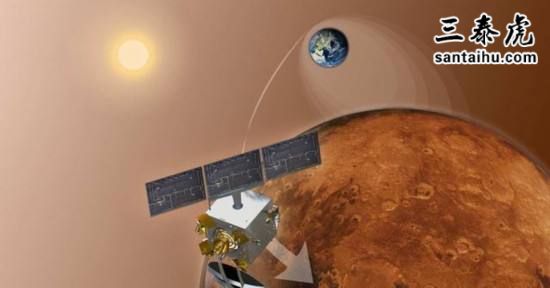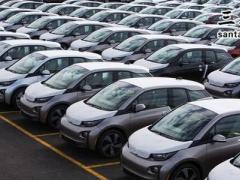印网友: 为什么印度早早投资太空技术, 本该投在基础设施和人民福利上的
Why was India invested so early in space technology when at that time, India should have invested i
Why was India invested so early in space technology when at that time, India should have invested it in its infrastructure and the welfare of the people?
为什么印度早早投资太空技术?印度本该把这些资金投在基础设施和人民福利上?
Quora评论翻译:
Balaji Viswanathan, ran a fintech company in the past.
Why do poor people send children to school? Could they not spend just on food and essential items alone? Why do they invest in children “so early” when they are not going to get to work for a decade or more?
You cannot get to tomorrow by just doing things that keep you sustained for today. Unless you invest in tomorrow you are going to be stuck in the vicious cycle of poverty.
What India spends in space is a very small fraction of what India spends in social welfare programs. Even if you completely close down the space program it is not going make a big change in our welfare programs.
Thus, India has to invest in today [food security, healthcare] and tomorrow [space, energy]. And the hope of a better tomorrow will propel us forward today.
And the space technology is already paying off quite well as ISRO is making money launching satellites of other countries and also benefitting our defense and other ministries.
India is not a poor country. It is just a rich country that has gone through a temporary state of poverty and getting out of it.
为什么穷人要送孩子去上学?难道不能用来买吃的吗,不能用来买日用必需品吗?为什么他们“这么早”就对孩子进行投资,而孩子在未来10年甚至更长时间都不会去工作的?
你不能得过且过,做一天和尚撞一天钟。如果你不对未来进行投资,你将陷入贫穷的恶性循环。
印度在太空上的花费只占社会福利项目花费的很小一部分。即使你完全关闭了太空计划,我们的福利计划也不会有太大的改变。
因此,印度必须投资于当前(食品安全、医疗保健)和未来(太空、能源)。对更美好明天的期望是我们今天前进的动力。
太空技术已经有了很好的回报,ISRO也在通过发射其他国家的卫星赚钱,同时也使我们的国防和其他部门受益。
印度不是一个贫穷的国家,而是一个富裕的国家,只是经历了一段暂时的贫困时期。
来源:三泰虎 http://www.santaihu.com/46025.html 译者:Jessica.Wu
Chandru Pandian D, Commodities Trader
Recently, there was an article by Shekhar Gupta which detailed that many in India don’t get the difference between the pursuit of scientific inquiry and technology (could have been titled better). The article created a bit of a social media furor — obviously! (shocked that there was a social media backlash on an article?)
最近,Shekhar Gupta(印度知名记者)发表了一篇文章,描述了在印度,许多人并没有意识到追求科学探究和技术之间的区别(这个标题本可以写得更好)。这篇文章在社交媒体上引起了一阵骚动!(一篇文章在社交媒体上引起强烈反响,震惊吗?)
You could very well replace India with a placeholder name for anyone who makes this argument that India should have invested in the welfare of its people rather than on research and development. It was a good piece. Modi’s space dream: India still doesn’t know the difference between tech & science
这是一件好作品,莫迪的太空梦:印度仍然不知道科技和科学的区别。
But the crux of the opinion piece was today’s science is tomorrow’s technology and we tend to place a higher emphasis on technology, but not the pursuit of science that forms the basis of technological advancements.
但是这个观点的核心是今天的科学是明天的科技,我们倾向于更重视科技,而不追求作为科技进步基础的科学。
This kind of mentality will only ensure that India remains largely the hub of doing back-end support, admin and services work using our cheap labor and resources and reverse engineering existing innovations at a low cost. This is how countries stagnate at the middle income, unable to break the barrier once they’ve exhausted their low cost options.
这种心态只会确保在很大程度上,印度仍然是利用廉价劳动力和资源从事后端支持、管理和服务工作的中心,并以低成本逆向工程进行创新。这就是各国在中等收入水平上停滞不前的原因,一旦他们用尽了低成本的选择,就无法突破这一障碍。
For the purposes of this argument, let’s forget about recent investments in space research. Let’s take the investments in ISRO at its inception when India was at a far worse off place than it is now in terms of literacy, poverty, mortality rates and life expectancy.
就这个论点而言,我们去切不论忘记最近在太空研究方面的投资,以ISRO在成立之初的投资为例,当时印度在识字率、贫困程度、死亡率和预期寿命方面比现在差得多。
It’s not difficult to see how those investments have paid off in very material terms in improving the lives of people.
不难看出,这些投资在改善人民生活方面取得了非常实质性的回报。
Agriculture has greatly benefited from better weather modeling thanks to the quality of data collected by our satellites.
由于我们的卫星收集的数据质量高,农业从更好的天气预报中获益良多。
We have the capability to generate large amounts of quality and accurate data about the environment, land, ocean and freshwater.
我们有能力生成大量关于环境、陆地、海洋和淡水的高质量和精确数据。
Aerial images provided by ISRO can be used to modernize the land records.
ISRO提供的航拍图像可用于更新土地记录。
Aerial topographical surveys aid in the exploration and development of natural resources on which we spend a fortune in terms of foreign reserves. Types of Land Surveying Utilized by Mining Operations
航测地形有助于勘探和开发自然资源,在这方面我们花费了大量外汇储备。采矿作业使用的土地测量类型
Take India’s National Remote Sensing Centre (NRSC), for example:
NRSC has created large scale 3D spatial at 1:1000 (including attribute information) for Hyderabad, Bangalore and Kolkata from Aerial Photographs of 1:6000 for National Informatics Centre. A detailed floor level mapping was carried out using Photogrammetry techniques. Large Scale 3D spatial/nonspatial databases have become indispensable in Utility GIS applications like urban planning, water and sewerage management, transportation, revenue tax collection, garbage disposal, telecom services and other location based services in their day-to-day operations and in future planning and development.
以印度国家遥感中心(NRSC)为例:
NRSC已经为海得拉巴、班加罗尔和加尔各答从国家信息中心1:6000航拍照片中创建了1:1000大规模3D太空(数据包括属性信息)。使用摄影测量技术进行了详细的楼层地图绘制。大型三维太空/非太空数据库已成为地理信息系统应用比如,城市规划、水务和排污管理、交通、税收征管、垃圾处理、电信服务和其它基于位置的服务等在日常运营及未来规划和开发中不可或缺的数据。
You can read some more examples of their practical applications here. National Remote Sensing Centre
你可以在这里阅读更多的实际应用示例:国家遥感中心
What about contingencies like we have in Kerala in terms of rescuing people, coordinating rescue operations and knowing the terrain.
还有像我们在喀拉拉邦遇到的紧急情况,在人员救援,协调救援行动和了解地形方面发挥的作用。
There is also the small matter of prestigious organizations like ISRO inspiring people to take up the pursuit of scientific inquiry. Did anyone the benefit of determining the double helix structure of a DNA? You could have asked at that time what exactly are we going to gain by this, except that it ushered in a new age of healthcare.
有人知道确定DNA双螺旋结构的好处吗?当时你可能会问,我们究竟能从中得到什么,除了它开创了一个新的医疗保健时代。
As crude as it may sound, all expenses are not the same when it comes to return on investment. In the long run, expenses made on blue sky research, research and development in general, opportunity costs incurred by foregoing some high taxes, and infrastructure expenses bear a higher return in terms of improving the lives of vast swathes of people.
当涉及到投资回报时,所有的费用都是不一样的。从长远来看,由于放弃一些高税收和基础设施支出而产生的机会成本,在“蓝天研究”等研发上的花费在改善广大人民生活方面带来了更高的回报。
Welfare expenses, for all intents and purposes, are a stand-in while we work to make opportunities available for large masses of people. It should not never be the be all and end all.
无论出于何种目的,福利支出都是我们努力为广大人民提供机会时的临时替带品。它不代表全部,也不能结束一切。
Quinton Quade, M.S. from The University of Utah (2011)
This question assumes the fungibility of human capital.
You could say the same thing about India’s nuclear program.
Different people have different personalities, strengths, and aptitudes. Some people make good accountants, others make good artists.
India has an abundance of excellence in STEM. You can’t expect people who can do aerospace to spend their lives building affordable housing and soup kitchens, just because you think that’s what the country needs. Those people would have just moved to other countries and pursued aerospace there.
Apart from that, a lot of people get the impression that present day humanity has the means to end poverty and suffering. No amount of resources can end poverty. If India had decided to devote all of its aerospace resources to fighting poverty, it would have exactly the same amount of poverty and no space program. Instead, now it has an asset in addition to the usual set of liabilities.
这个问题假设了人力资本的可替代性。你也可以说印度的核计划也是如此。
不同的人有不同的个性、长处和才能。有些人能成为优秀的会计,有些人成为优秀的艺术家。
印度在科学、技术、工程和数学领域有很大优势。你不能指望那些能做航空航天工作的人一辈子都在建造经济适用房和施粥所,就因为你认为这是这个国家所需要的。这些人会搬到其他国家,到那里发展航空事业。
除此之外,很多人认为,如今人类有结束贫穷和苦难的手段,没有更多的资源来消除贫困。如果印度将其所有航空航天资源用于与贫困作斗争,其贫困程度将保持不变而且还丧失了航天计划。反之,投资于太空计划,除了通常的负债,现在国家还多了一项资产。
Sayandeep Gupta
In a way the questioner has pointed out one thing. Researching Space Technology is an investment indeed. As with all investment the benefits are reaped not then and there but a few years from the time the investment is made.
在某种程度上,提问者指出了一点,研究太空技术的确是一项投资。就像所有的投资一样,并不是一开始就有回报,而是要数年后才会有。
Well by welfare of people you mean to say that people go hungry so they should be fed, provided with better medical facilities. Now my friend there are already programs for that and the amount allocated to space research is so miniscule that if it would have been added to the already existing programs it wouldn't have made a big difference. However, think about the remote sensing satellites that India made and launched. They help in meteorological predictions, in study of soil composition, land under cultivation, river catchment areas. All these help the agricultural scientists to make better land use and get better crop yields. The better yields in crop can better feed the hungry than a simple food for all programs.
说到人民的福利,你是指人们会挨饿所以他们应该得到食物和更好的医疗设施。现在已经有福利方面的项目了,而分配给太空研究的资金是如此之少,就算把这些资金加到福利项目中,也不会有太大作用。然而,想想印度制造和发射的遥感卫星,它们有助于气象预测,研究土壤组成、耕地、河流集水区。这些都有助于农业科学家更好地利用土地,提高作物产量。作物产量越高,就能更好地为饥民提供食物。
Mangalyan helped understand the environment on Mars and could pave the way for future Mars colonization. This can reduce the population pressure experienced by planet Earth and make it more habitable.
Mangalyan火星探测器帮助了解了火星上的环境,并为未来的火星殖民铺平了道路。这可以减少地球的人口压力,使其更适合居住。
Chandrayan helped us understand more about helium 3 on moon which can act as a fuel for rockets and hence the moon can act as a base for longer space missions.
“月船”计划帮助我们了解了月球上氦3元素的更多信息,氦3可以作为火箭燃料,因此月球可以作为长期太空任务的基地。
Aditya the upcoming solar mission can help us understand the sun better and might help us predict solar storms that can have catastrophic consequences on tele-communication systems namely satellites in space.
即将到来的太阳计划可以帮助我们更好地了解太阳,并帮助我们预测太阳风暴,这些风暴可能对远程通信系统,也就是太空中的卫星造成灾难性的后果。
The cheap but reliable launch capability achieved by ISRO can help add critical foreign exchange to the economy by helping launch foreign satellites.
ISRO廉价而可靠的发射能力可以帮助发射外国卫星,从而为经济增加关键的外汇。
The research done will only add to our knowledge and humans are what they are today because of the progress made using such researches.
所做的研究只会增加我们的知识,人类今天的成就,是因为使用这些研究取得了进步。
A space scientist can elaborate and explain many more things and the things I mentioned far better.
在这方面,一个太空科学家可以作出更好的阐释。
So my friend just as building roads have a multiplier effect on the economy. Space research also has a multiplier effect not only on the Indian Economy but also on the whole global economy. Not to mention it promotes scientific temper and rationality which India desperately needs now.
所以就像修路对经济有乘数效应一样,太空研究不仅对印度经济有乘数效应,对全球经济也有乘数效应,更不必说它促进了印度现在迫切需要的科学态度和理性。
If you chose to work on keeping your brain, heart and lungs functional while neglecting your other organs you will definitely not have a very healthy life. In the same way a country that focuses on only certain aspects of living while neglecting others is only going to suffer. So investment in space technology is absolutely worth every rupee we spend on it.
如果你选择在保持大脑、心脏和肺功能的同时却忽略其他器官,你肯定不会过上非常健康的生活。同样,一个只关注生活的某些方面而忽视其它方面的国家只会遭受苦难。因此,在太空技术上的投资绝对值得我们在上面所花费的每一卢比。
Vinay Kumar Rautiya, MBBS from Government Medical College, Nagpur (2020)
Because the aim of investment in space technology “was not to compete with developed nation for manned space-flight or exploration of moon & planets. Main aim was to application of advanced space technology to aiding country for economic reasons and real problems of society”— Vikram Sarabhai (Founder and father of ISRO)
因为“太空技术投资的目的不是为了与发达国家竞争载人航天飞行或探索月球和行星。其主要目的是将先进的太空技术应用于解决经济和社会问题,造福国家。”——Vikram Sarabhai (ISRO创始人)
A country cannot progress without the applications of space technology; and it was a must situation for India- being a large and diversity country suffering from poverty at that time.
没有太空技术的应用,一个国家就无法进步。对印度这样幅员辽阔、多元化但饱受贫困之苦的国家来说,这曾是一个必须面对的局面。
Aryabhatta, Bhaskara- I & II, Rohini- I&II, APPLE. All these were the satellites launched initially in the history of ISRO. Aryabhatta, launched in 1975 was aimed for Earth Sciences and Space Physics. Similarly, the main objectives of satellites were — Astronomy, Communications, Engineering, Earth Sciences.
Aryabhatta, Bhaskara- I & II, Rohini- I&II, APPLE,这些都是ISRO最初发射的卫星。Aryabhatta号于1975年发射,目的是用于研究地球科学和太空物理学。同样,这些卫星的主要目的是应用于天文学、通信、工程和地球科学。
Applications of these were in Telecommunications, Resource Management, Military, Academic etc.. mainly to benefit Farming and Forestry.
这些应用在电信、资源管理、军事、学术等领域,主要有益于农业和林业。
No satellite means no facility, that means dependent on other nations for this. India couldn't have developed at this far if they hadn't invested in space technology at that time.
没有卫星就意味着没有设施,这就意味着要依赖其他国家。如果当时没有对太空技术进行投资,印度不可能发展到现在的水平。
Now at this time, there is no or very little need to invest in these type of satellites; India has moved on to other missions. Like launching the other nations satellites, Chandrayan I &II, MOM and now man mission. And Yes. It helps to build the reputation and attracts money from other countries.
现在,几乎没有必要投资于这些类型的卫星。印度已经开始执行其他任务,比如发射其他国家的卫星、月船1号和2号、火星探测器和载人航天任务。这些有助于建立声誉,并吸引来自其他国家的资金。
版权声明
我们致力于传递世界各地老百姓最真实、最直接、最详尽的对中国的看法
【版权与免责声明】如发现内容存在版权问题,烦请提供相关信息发邮件,
我们将及时沟通与处理。本站内容除非来源注明五毛网,否则均为网友转载,涉及言论、版权与本站无关。
本文仅代表作者观点,不代表本站立场。
本文来自网络,如有侵权及时联系本网站。
阅读:
-
1
चाइना में रेडी और ठेले Local shops in china || L...
- 2
- 3
- 4
- 5
- 6
- 7
- 8
- 9
- 10
-
1
चाइना में रेडी और ठेले Local shops in china || L...
- 2
- 3
- 4
- 5
- 6
- 7
- 8
- 9
- 10












